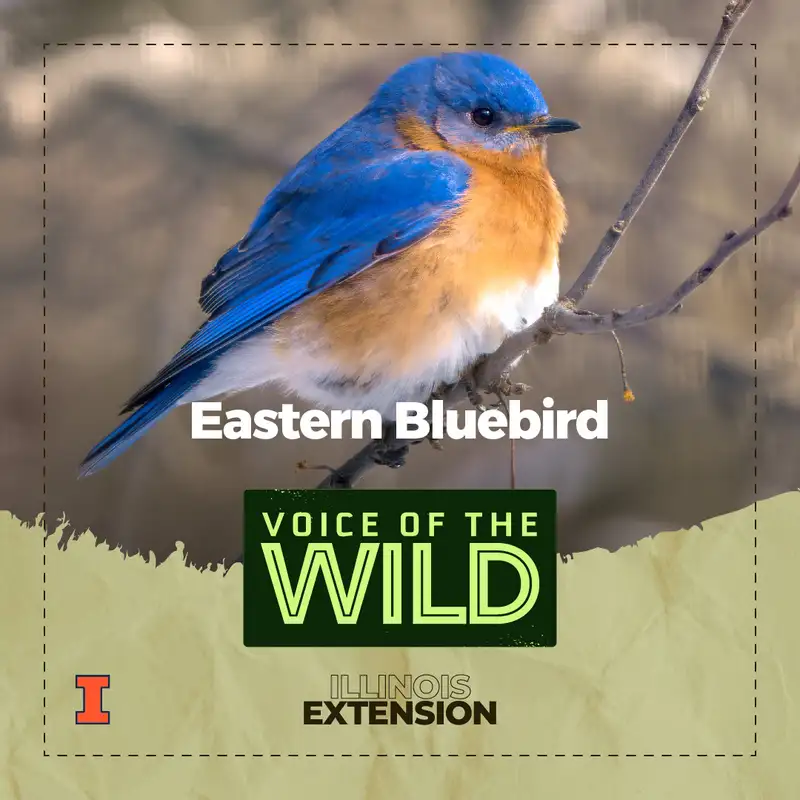 Episode 27
Episode 27
· 02:50
This is Illinois Extension’s Voice of the Wild. A new wild voice in just a moment, so find someplace quiet, take a deep breath, and enjoy.
The subject of song, poem, fairytale, and folklore; this blue, white, and rusty red bird is a strong contender for America’s most beloved animal. So, it's hard to believe we almost lost it. Their population dwindled throughout the early 1900’s - primarily because of competition for nesting cavities with the invasive European Starling. Around the 1960’s, folks started providing birdhouses with entrances just a little too small for the starling, and placed them along dedicated trails abutting appropriate habitat, scrubby meadows and forest clearings. Combined with pesticide reform, that simple intervention led to the species’ recovery. With their population stable, they’ve become a symbol in yet another story - one that tells of the power of stewardship.
This is the eastern bluebird (Sialia sialis) from the family of thrushes, Turdidae. The Eastern Bluebird has several kinds of vocalizations; two of them, its song and regular call, are given with the same breathy melancholic voice. It also makes stuttering “chit” noises and these can sound somewhat sparrowlike. Here’s the Eastern Bluebird again - listen for the sparrowlike chattering among its musicals churrs.
Thank you to the Macaulay library at the Cornell lab for our bird sounds. And thank you for tuning in to learn a new wild voice with Illinois Extension.
Listen to Voice of the Wild using one of many popular podcasting apps or directories.